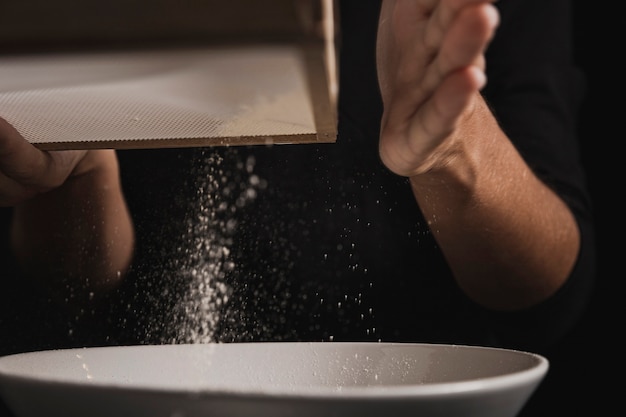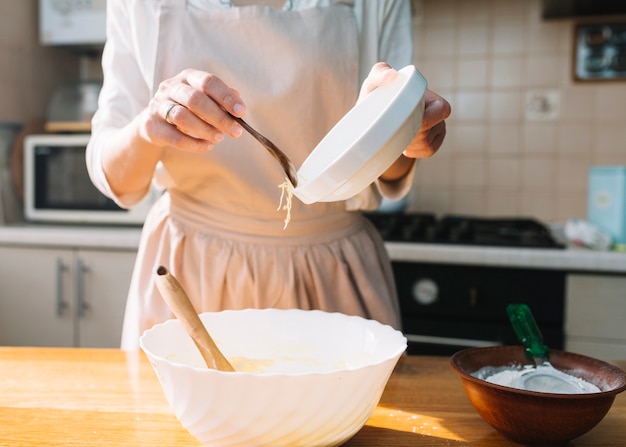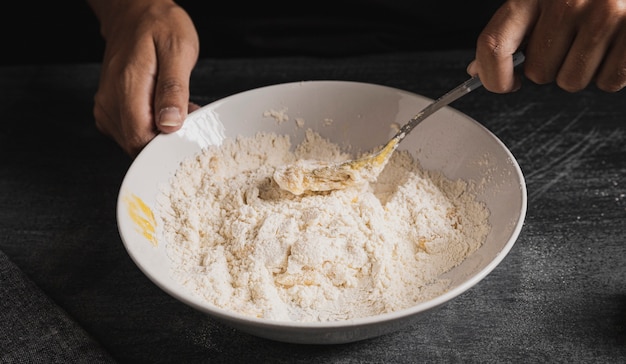Ah, the rice cooker. A kitchen appliance that has become a staple in many households, and for good reason! It's the ultimate time-saver for those who adore rice but don't fancy spending hours tending to a pot on the stovetop. But even with this wonder of modern cooking, there's a bit of an art to getting the perfect fluffy, perfectly cooked rice.
Don't worry, it's not as complicated as it might seem. This guide is your complete blueprint to navigating the world of rice cooker rice cooking time. We'll tackle the basics, dive into the secrets of the perfect rice-to-water ratio, explore different rice varieties, and even unveil some nifty tips and tricks that'll take your rice game to the next level. Ready to become a rice cooker master? Let's get started!
Part 1: The Basics of Rice Cooker Rice Cooking

choosing the right rice Cooker: A Match Made in Kitchen Heaven
First things first, let's talk about rice cookers themselves. It's like choosing a trusty partner in your culinary journey! There's a plethora of options, from simple, no-frills models to fancy multi-cookers with more features than you can imagine. Personally, I'm a simple soul and prefer a straightforward, reliable rice cooker that does its job flawlessly. But hey, if you fancy a bit more excitement with your rice cooking, there's a whole world of multi-cookers waiting to be explored.
Understanding Rice Varieties: A Journey of Taste
The type of rice you use can make all the difference. It's like choosing your favourite type of tea – each with its own distinct character and flavour. Here's a breakdown of some popular varieties:
white rice: The workhorse of the rice world! It's quick-cooking, fluffy, and a blank canvas for any flavour you want to add.
brown rice: A whole grain powerhouse brimming with nutrients and fibre. It takes a bit longer to cook but delivers a satisfyingly nutty flavour.
basmati rice: The long-grain queen! It's known for its fragrant aroma, fluffy texture, and ability to hold its shape – perfect for those who love their rice nice and separate.
jasmine rice: Another long-grain champion, this one boasts a delicate floral aroma that adds a touch of elegance to any dish.
sushi rice: The sticky star of the show! It's short-grained, slightly sweet, and perfect for sushi – a must-have for those who love a little Japanese flair in their kitchen.
The Importance of Water Measurement: Getting the Ratio Right
This is where the real magic happens! Getting the water measurement spot-on is crucial for achieving perfectly cooked rice. Too much water, and your rice will turn into a soggy mess. Too little, and you'll be left with dry, undercooked grains. The general rule of thumb is a 1:1 ratio of rice to water, but as with most things in life, there are some nuances to consider.
Part 2: Mastering the Art of rice-to-water ratio: Finding Your Sweet Spot

The 1:1 Ratio: A Starting Point, Not a Set-in-Stone Rule
The 1:1 ratio is a great starting point for your rice cooker journey, but it's not a one-size-fits-all solution. Different rice varieties have different water absorption rates, so you might need to adjust the ratio depending on what you're cooking. For example, brown rice typically needs a bit more water than white rice.
Experimentation and Personal Preference: Your Rice Cookbook
I've discovered that the best way to find your perfect rice-to-water ratio is to experiment. Start with the 1:1 ratio, and then adjust based on your results. If the rice is a bit mushy, use a little less water next time. If it's dry, add a tad more. Think of it as building your own rice cookbook, tailored to your preferences.
Part 3: Rice Cooker rice cooking times: A Guide to Timing Perfection

General Guidelines for Different Rice Varieties: Setting the Clock
Here's a quick guide to get you started with typical rice cooking times. Keep in mind that these are just general guidelines, and you might need to adjust based on your specific rice cooker and desired level of doneness.
| Rice Variety | Cooking Time (minutes) |
|---|---|
| White rice | 20-25 |
| Brown rice | 40-45 |
| Basmati rice | 15-20 |
| Jasmine rice | 15-20 |
| Sushi rice | 20-25 |
Factors Affecting Cooking Time: Understanding the Variables
There are a few factors that can influence cooking time:
The amount of rice you're cooking: Cooking a larger batch might take a bit longer.
The age of your rice cooker: Older models might need a bit more time to reach the desired temperature.
The altitude at which you live: Higher altitudes can affect cooking times.
The "Keep Warm" Function: A Savvy Time-Saver
Most rice cookers have a "keep warm" function, which is a lifesaver for keeping your rice warm and fluffy until you're ready to eat. However, I tend to avoid using it for extended periods as it can sometimes dry out the rice.
Part 4: Tips for Perfect Rice Cooker Rice: Elevate Your Rice Game
Pre-Washing the Rice: A Step Towards Perfect Fluffiness
I've found that pre-washing my rice before cooking it makes a significant difference in achieving that light, fluffy texture. It helps remove excess starch, which can make the rice sticky and clumpy. Simply rinse the rice in a sieve under cold running water until the water runs clear.
Adding Salt: A Touch of Savoury Magic
A pinch of salt in the water does wonders for enhancing the flavour of your rice. It's a simple trick that elevates the taste profile.
Stirring the Rice: A Hands-Off Approach
Resist the urge to stir the rice while it's cooking! Your trusty rice cooker knows what it's doing. Stirring can disrupt the cooking process and lead to clumpy rice.
Don't Open the Lid: Let It Cook in Peace
Be patient and resist the temptation to peek into the rice cooker while it's working its magic. Opening the lid can release steam and affect the cooking process. Trust me, the wait is worth it!
Part 5: Going Beyond Basic Rice: Expand Your Rice Cooker Horizons
Cooking Brown Rice: The Art of Patience
Brown rice takes a bit longer to cook than white rice, so adjust the water ratio and cooking time accordingly. I usually use a 1.5:1 ratio of water to brown rice and cook it for 40-45 minutes.
Using a Rice Cooker for Other Grains: Embrace the Versatile Power
Your trusty rice cooker isn't just for rice! You can use it to cook a variety of grains, including quinoa, couscous, and barley. Just follow the instructions on the packaging for the appropriate water ratio and cooking time.
Cooking Risotto in a Rice Cooker: A Rice Cooker Risotto Adventure
Risotto, a classic Italian dish, is traditionally cooked on the stovetop, but you can also create a delicious risotto in your rice cooker. Here's how:
1. Sauté the aromatics: Start by sautéing some onions, garlic, and butter in a separate pan. This adds a beautiful base of flavour.
2. Add the rice: Add the rice to the pan and cook it for a few minutes to give it a head start.
3. Transfer to the rice cooker: Gently transfer the rice mixture to your rice cooker.
4. Add the broth: Gradually add hot broth to the rice cooker, stirring after each addition to ensure even cooking.
5. Cook until creamy: Continue cooking until the rice is creamy and the liquid has been absorbed. It's a bit more hands-on than cooking plain rice, but the results are well worth the effort!
Experimenting with Flavours: Let Your Creativity Run Wild
Once you've mastered the basics of rice cooking, it's time to get creative! Here are some ideas to add a touch of flavour to your rice:
Add herbs and spices: Infuse your rice with warm spices like turmeric, ginger, or garlic powder for a delightful flavour boost.
Try different broths: Instead of plain water, use chicken or vegetable broth to add depth and richness to your rice.
Add vegetables: Toss in chopped carrots, peas, broccoli, or any other favourite vegetables for a colourful and healthy meal.
Get creative with toppings: Top your rice with fried eggs, grilled chicken, roasted vegetables, or any other delicious additions.
Part 6: Rice Cooker Hacks: Smart Tips for Rice Perfection
The "Floating Rice" Method: A Simple Test for Perfect Cooking
This is a simple but effective trick to ensure your rice is cooked just right. Add the rice to your rice cooker, add enough water to cover the rice by about an inch, and gently stir it with a spoon. If the rice floats to the top, you've got the right amount of water. If it sinks to the bottom, add a bit more water.
The "Spoon Test": Checking for Doneness
Once the rice cooker has finished, take a spoon and gently scoop out a bit of rice. If it's cooked through, it should be fluffy and separate. If it's still a bit firm, cook it for a few more minutes.
Keeping Rice Fresh: Storing Leftovers Wisely
To keep leftover rice fresh, store it in an airtight container in the refrigerator for up to 3 days. You can reheat it in the microwave or on the stovetop. Just remember that reheated rice can dry out, so you might need to add a little water or broth when reheating.
Part 7: Rice Cooker Safety: Keeping Your Rice Cooker in Tip-Top Shape
Cleaning Your Rice Cooker: A Clean Appliance Means Delicious Rice
Cleaning your rice cooker is essential for maintaining its performance and hygiene. Most rice cookers can be cleaned with a damp cloth and mild dish soap. Always unplug the rice cooker before cleaning it.
Storing Your Rice Cooker: Keeping It Happy and Healthy
Store your rice cooker in a dry, cool place when not in use. Avoid damp or humid areas, as this can damage the appliance.
Avoiding Common Mistakes: Protecting Your Rice Cooker
Don't overload the rice cooker: Follow the manufacturer's guidelines for the maximum rice capacity.
Don't use metal utensils in the rice cooker: This can scratch the inner pot.
Don't wash the inner pot in the dishwasher: Hand wash it with mild dish soap.
Part 8: FAQs: Answers to Your Rice Cooker Questions
1. What if my rice cooker doesn't have a "keep warm" function?
If your rice cooker lacks a "keep warm" function, you can keep your rice warm by transferring it to a heatproof container and placing it in a preheated oven set to the lowest setting.
2. How do I know if my rice cooker is working properly?
If your rice cooker seems to be acting up, check these things:
Make sure it's plugged in.
Check the fuse box.
Check the power cord for any damage.
If the rice cooker is still not working, contact the manufacturer.
3. How can I make my rice fluffier?
To achieve extra fluffy rice, try these tips:
Use a higher rice-to-water ratio.
Cook the rice for a few extra minutes.
Fluff the rice with a fork after it's cooked.
4. Can I cook rice in a slow cooker?
You can cook rice in a slow cooker, but it's not as quick and easy as using a rice cooker. If you do, use a 1:1 ratio of rice to water and cook it on low for 2-3 hours.
5. What are some good resources for rice cooker recipes?
There are tons of rice cooker recipe ideas out there! A quick Google search will turn up a treasure trove of inspiration. And remember, you can always adapt your favourite rice dishes to be cooked in a rice cooker!
With these tips and tricks, you're well on your way to mastering the art of rice cooker rice cooking. So grab your favourite rice, get your rice cooker ready, and embark on a delicious adventure!
Everyone is watching

Corn on the Cob: The Ultimate Guide to Perfectly Cooked Ears
Healthy MealsAh, corn on the cob. Just the name evokes images of sunny days, barbecues, and that sweet, juicy flavour that ...

Perfect Pork Roast Oven Cooking Time: A Guide to Delicious Results
Healthy MealsThere's something truly satisfying about a perfectly roasted pork. The aroma alone is enough to make your mout...

Scallops: The Ultimate Guide to Perfect Cooking
Healthy MealsAh, scallops. Those delicate, sweet, and utterly delicious morsels of the sea. They hold a special place in my...

Spaghetti Squash: The Ultimate Guide to Cooking and Serving
Healthy MealsRemember that time you saw spaghetti squash at the supermarket, looking all bumpy and strange, and thought, "W...

Ham Cooking Time: How Long to Bake, Smoke, or Boil a Delicious Ham
Healthy MealsAh, ham. It's a classic, isn't it? A real crowd-pleaser, especially around holidays. And when done right, it'...
